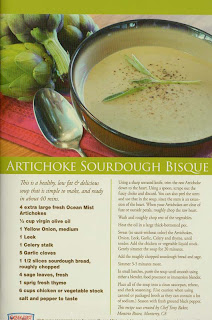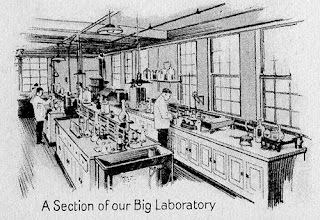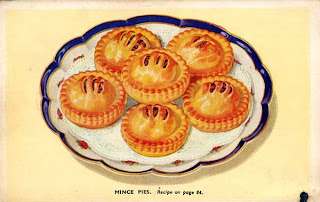Texas Pecans
Lately, I've been wanting to make a German Chocolate cake, which is our favorite cake around here. I missed a January birthday and I missed Valentine's Day. Easter's coming up quickly. I decided I needed to make more of an effort to get this done.
To make the traditional coconut-pecan frosting for the German Chocolate cake, one needs to have some nice pecans.
After a cold and rainy Friday and Saturday, the Sunday skies were blue and clear. The cool, crisp weather invited one to venture outdoors to take advantage of the day, so I chose this day to take a short roadtrip that's been on my To Do list for a while.
I've not had good luck in the past couple of years in buying pecans from the grocery. It doesn't matter which store, or which brand; they all seem to taste a bit rancid. I've checked the best-used-by dates before my purchases, I've returned them to the store, I've written emails to the companies, I've gotten my money back, numerous times. It's hit or miss, usually miss, and it wastes a lot of my time when they're not right.
I finally gave up buying them from the grocery store and when the need arises for pecans, I just go to a place called Potter's, which is not too far away (if you live in Texas and are used to driving long distances to get anywhere). Potter's is kind of a tourist place, the kind of place located in a small town along the highway, where you might exit to buy gas or pick up something to drink. To get more value from the trip, we stopped for Sunday lunch at Schobels, where the baked ham, fried chicken and fresh vegetables tasted almost like what you'd get at Grandma's house on Sunday afternoons in the past (and there are no dishes to wash).
I was too stuffed after the delicious meal to accept any of the samples of roasted caramel or cinnamon pecans that the sales assistants were passing around. My goal was the 3-lb. container of the fresh shelled pecan halves. They were grown right there in Schulenburg, and they tasted so fresh and full of pecan goodness.
But they were dear. I brushed aside the thought that paying $45.00 for pecans was completely ridiculous, and did I really need pecans so badly that I just couldn't get a $6.00 bag at the Wal-Mart down the street from me? It was a fleeting thought, however, because these will last awhile--several cakes and chocolate chip cookie batches' worth and the quality is just so much better.
They also sell bags of Pecan Meal, which I've purchased in the past, that I use in breadings for fish and such. I've noticed that Texans seem to prefer pecans over other nuts and I'm no different. I add them to everything I can. They are great for sprinkling over green salads too.

There were recipe brochures available on the counter and you know I took one. Nutritious and Delicious Texas Pecans (not dated) was published by the Texas Pecan Growers Association and is just a small fold-out single page. There are four recipes (Savory Pecan Cheese Balls, Pecan Cupcake Brownies, Helen's Coconut Cake and Sauteed Trout with Pecans) along with the nutrients found in shelled pecans listed on the back. Pecans are another heart healthy food with no sodium, trans fat or cholesterol. Never mind (again) that I will mix them up with sugar and butter which may not be quite so heart healthy. I consider the brochure an added bonus, to slightly offset the price of the pecans. (Another added bonus were the two give-away ball point pens that just happen to be my favorite style of gimme pen. The bank won't let me have any more so I get them when I can.)


 The cookbook that I use for my frosting recipe is the Baker's Book of Chocolate Riches (1983, 96 pp). It's a spiral bound hardcover that I remember sending away for in the mail back in the early 80s. Although I have made the cake from scratch using the recipe inside, I must confess that most often I use a Duncan Hines German Chocolate cake mix, which usually tastes better than mine anyway. (I'm not too fussy about cake mixes. A homemade cake that's made with a cake mix is still far superior to a cake that you buy from the store (excluding some of the fancy-dancy bakeries.) I do, however, use the recipe for the Coconut-Pecan Filling and Frosting. The recipe says that you can use either heavy cream or evaporated milk to make the frosting, and I always use the evaporated milk because I think that's part of what makes it taste so good. That, and the fresh pecans. (I always use real butter too.)
The cookbook that I use for my frosting recipe is the Baker's Book of Chocolate Riches (1983, 96 pp). It's a spiral bound hardcover that I remember sending away for in the mail back in the early 80s. Although I have made the cake from scratch using the recipe inside, I must confess that most often I use a Duncan Hines German Chocolate cake mix, which usually tastes better than mine anyway. (I'm not too fussy about cake mixes. A homemade cake that's made with a cake mix is still far superior to a cake that you buy from the store (excluding some of the fancy-dancy bakeries.) I do, however, use the recipe for the Coconut-Pecan Filling and Frosting. The recipe says that you can use either heavy cream or evaporated milk to make the frosting, and I always use the evaporated milk because I think that's part of what makes it taste so good. That, and the fresh pecans. (I always use real butter too.)
Coconut-Pecan Filling and Frosting: Combine 1 cup evaporated milk or heavy cream, 1 cup sugar, 3 slightly beaten egg yolks, 1/2 cup butter or margarine and 1 teaspoon vanilla in saucepan. Cook and stir over medium heat until mixture thickens, about 12 minutes. Remove from heat and stir in 1-1/2 cups (about) Baker's Angel Flake coconut and 1 cup chopped pecans. Cool until of spreading consistency, beating occasionally. Makes 2-1/2 cups.
I don't go to a lot of trouble making a layer cake because it doesn't last long enough to take the extra time. I use a 9x13 pan and just slather the frosting over the top.
It may be that the frosting is the main attraction of this cake in the first place since I obsess over the ingredients so much.


































